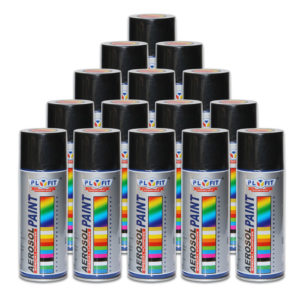Manage And Control Mites Infestation
Finding a strange rash or collection of bites on your skin is always disturbing, especially once you realize that they are coming from mites. Unfortunately, there are thousands of species of mites, and it is common to find them hiding in your cupboards, your carpet and even your bed. Black pepper mites, sometimes referred to as bird or rodent mites, typically don’t prefer to feed upon humans. Instead, they do so out of desperation when their primary food source abandons their nest. For this reason, managing these mites will involve a series of steps before you can find complete relief from your pest infestation.
Recognizing Mite Bites
At first glance, you may have mistaken your mite bite for a mosquito bite since they have a similar red, raised appearance. However, multiple bites in the same location are a sign of a mite’s feeding pattern. You may also notice mite bites keep appearing, or they occur during times when you are less likely to be bitten by other pests. While they are itchy and irritating, most mite bites are easily treatable with over-the-counter anti-itch medications. However, they may need to be treated if they become infected. It is also reassuring to know that black pepper mites do not burrow into your skin. Once they feed, they quickly leave the host, yet they do spend a great deal of time reproducing.
Identifying an Infestation
Seeing bites is one sign of a mite infestation. However, you may also see individual mites on your skin or in common areas of your home. Between their tiny size of approximately less than 1 mm in length and their black coloring, it is easy to see where these mites got their name. You may see just an individual mite crawling across your body, or you may see an entire colony in a corner of your room if the infestation is severe. You should also suspect mites if you have other pest control problems pertaining to rodents or birds since these animals are known for being infested.
Locating the Source
These kinds of mites do not just fly or jump into your home. Instead, they prefer to live on a bird or rodent and only tend to enter homes when the host’s nest is abandoned. For this reason, the first step in dealing with mites is to find the primary source of infestation. An abandoned bird’s nest located near or inside your home is a common culprit. Rodent nests, however, can sometimes be harder to detect since they can be deep within your walls or the recesses of your attic. If you have noticed signs of other pest issues such as bird droppings around your porch or scratching within the walls, then it is important to mention these to your pest control technician since it gives them a place to begin their investigation.
Eliminating Mites
Once the primary source is found, getting rid of the mites can be as simple as removing the pests and their nests. If the bird or rodent is present, make sure to have it professionally removed because they can be carrying more dangerous disease than black pepper mites that could be transmitted through a scratch or bite. It is also important to thoroughly clean your home, and severe infestations may need additional treatments to eliminate the eggs. Vacuuming up visible mites is one method of removal, and wiping down affected countertops and furniture with household cleaners will also help to reduce the mite populations. Make sure to clean around your baseboards, mattress seams and in the corners of the rooms where tiny mites might be less obvious. After cleaning, make sure to dispose of vacuum bags and cleaning rags in a sealed container outdoors so that you do not re-infest your home.
Controlling Primary Pest Issues
Once you have removed the mites, you will need to control the primary pests to keep them away. In fact, finding mites can sometimes be a good thing if it alerts you to a more serious rat issue since they do carry dangerous diseases that can be spread to humans. Often, rodent infestations are quite extensive since they reproduce quickly. This means that you may need further pest treatments to eliminate birds or rodents from your property. It is also important to find out how they have entered your home. Usually, there is a weakness in your home’s exterior such as a hole in the roof or near the outside walls that has provided an easy entrance for pests to invade. Finding these areas points the way to nests that will eventually lead to further mite issues if they are not eliminated.
Preventing Future Infestations
Keeping your property maintained is the best way to prevent future rodent or bird mite infestations. Remove bird nests that are located close to your home, or consider setting up deterrents around the exterior of your property. Store your food in airtight containers and clean up spills promptly to deter rodents from thinking your home has an easy meal. Outdoors, keep branches at least three feet away from your home so that mites from bird nests have further to travel, and this practice will also make it harder for rodents to leap from branches onto your roof. If you do feed birds, do so away from your property since bird food itself attracts rodents and birds alike to your home, and smart critters will go so far as to enter your open garage or shed to get to it.
While discovering mites in your home or dealing with bites is enough to give you the creepy crawlies, it is helpful to know that these are usually fairly simple to manage once the main source of the infestation is discovered. Remember that regular seasonal inspections are critical for identifying pest issues before they spiral out of control. By working with your professional technician to keep an eye out for signs of pests between their visits, you can avoid having to deal with mites or critters in the future.
Non Toxic Spray

This non-toxic spray kills larvae, eggs, and adult insects by breaking down their exoskeleton. It is safe to spray around the home and works only on the insects. Feel good about spraying indoors around pets, plants and children.
All Natural Non Toxic Insect Killer Spray by Killer Green
